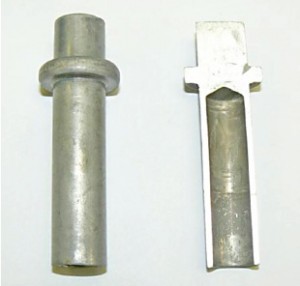From Fastener Technology International, December 2012
I can vividly remember the first time I walked onto the manufacturing floor of a fastener manufacturer. I was not a rookie to a manufacturing environment, having spent the previous two years in a large metal stamping facility, but the “rat-tat-tat” sound of multiple headers banging out hundreds of parts a minute was a big departure from the “ker-chunk” sound of a 2000 lb press forming a car’s hood or quarter panel that I had grown accustomed to. Although the headers were center stage and what I would subsequently naturally showcase during hundreds of plant tours in the years afterward, it was the humble thread roller that left an indelible memory during that first plant tour.
I suppose this impression was far less the result of any impressiveness of the machine itself and more on the ingenuity and complete unexpectedness of the rolling process. At that time, my paradigm was shaped from the only experience I had in threading a bolt, and that was using a tap and die set on my garage workbench. I guess I simply assumed that all threaded fasteners employed a tap or die in some fashion.
Therefore, I was fascinated to see parts being rolled between two flat plates at speeds so fast that they obscured the parts and transformed them into an unrecognizable blur. I walked away transfixed and appreciative of the creativity and ingenuity of some long past engineer. It would only be much later that I would fully appreciate the art of this process, but also the multitude of ways that it could produce defects and defective parts. This article is not intended to be an in-depth and detailed look at process, dies, set-up or any number of other factors that play a part in the conditions of the end product, but rather a brief introduction to the common failure modes that can result from thread rolling.
 From Fastener Technology International, June 2012
From Fastener Technology International, June 2012